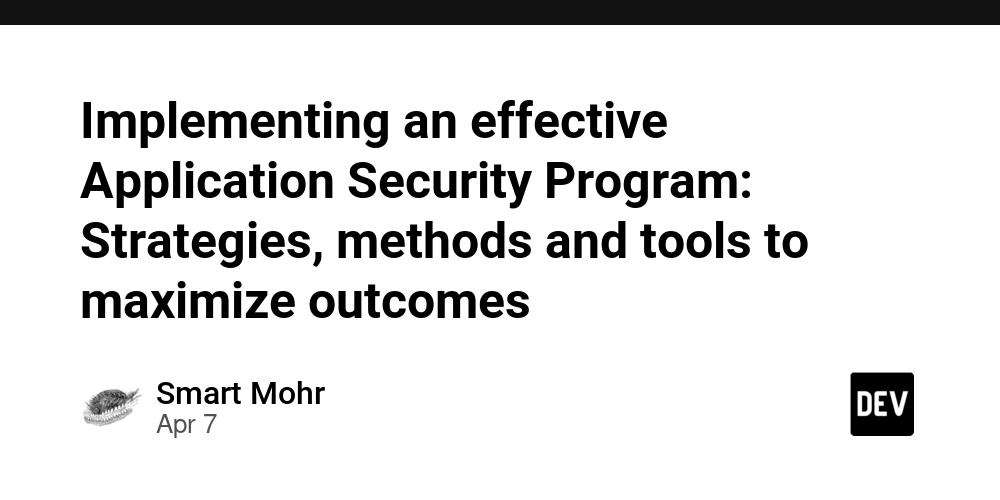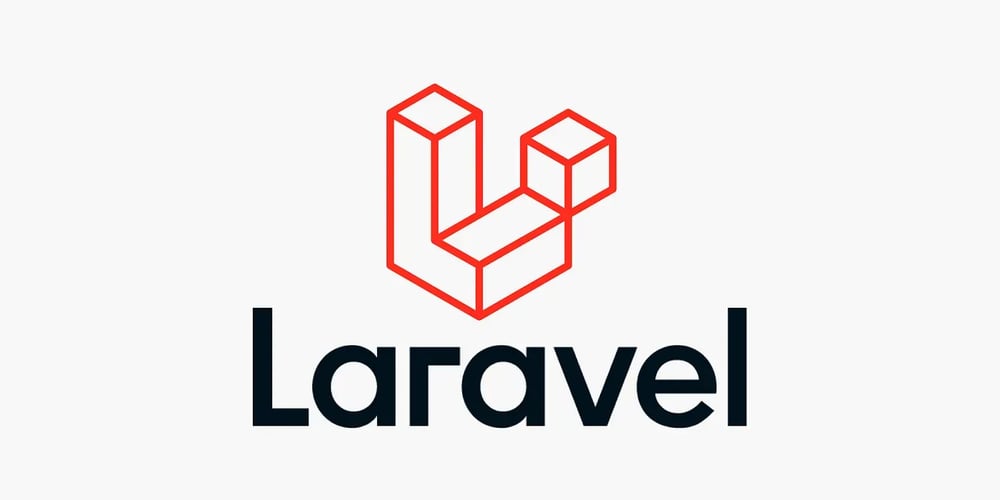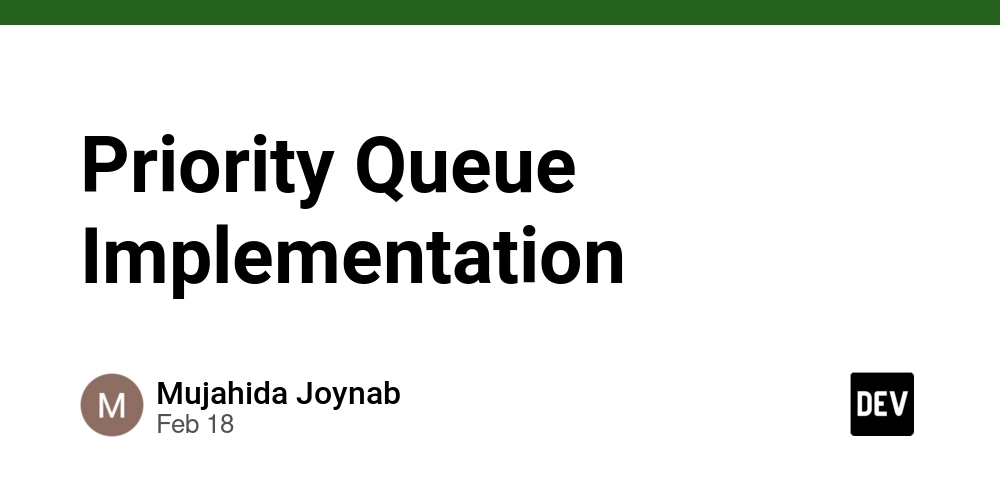Implementing an effective Application Security Program: Strategies, methods and tools to maximize outcomes
AppSec is a multifaceted, comprehensive approach that goes well beyond basic vulnerability scanning and remediation. The constantly changing threat landscape, and the rapid pace of technology advancements and the increasing complexity of software architectures demands a holistic, proactive strategy that seamlessly integrates security into all phases of the development process. This comprehensive guide will help you understand the fundamental elements, best practices and cutting-edge technologies that underpin a highly effective AppSec program that empowers organizations to secure their software assets, minimize threats, and promote a culture of security first development. A successful AppSec program is built on a fundamental shift of mindset. Security must be considered as a vital part of the development process and not as an added-on feature. This paradigm shift requires an intensive collaboration between security teams as well as developers and operations personnel, breaking down silos and fostering a shared feeling of accountability for the security of applications they design, develop and manage. In embracing a DevSecOps method, organizations can weave security into the fabric of their development workflows, ensuring that security considerations are taken into consideration from the very first stages of ideation and design all the way to deployment and ongoing maintenance. Central to this collaborative approach is the development of clearly defined security policies as well as standards and guidelines that provide a framework for secure coding practices, threat modeling, and vulnerability management. These policies should be based on industry standard practices, including the OWASP Top Ten, NIST guidelines and the CWE (Common Weakness Enumeration) and take into account the unique needs and risk profiles of the particular application as well as the context of business. By codifying these policies and making them readily accessible to all parties, organizations can ensure a consistent, secure approach across their entire portfolio of applications. It is essential to fund security training and education programs that help operationalize and implement these guidelines. These initiatives should seek to equip developers with information and abilities needed to create secure code, recognize possible vulnerabilities, and implement best practices for security during the process of development. Training should cover a range of topics, including secure coding and the most common attack vectors as well as threat modeling and secure architectural design principles. By promoting a culture that encourages constant learning and equipping developers with the tools and resources they require to incorporate security into their daily work, companies can create a strong base for an effective AppSec program. Security testing must be implemented by organizations and verification processes and also provide training to spot and fix vulnerabilities before they can be exploited. This requires a multilayered method that combines static and dynamic techniques for analysis and manual code reviews as well as penetration testing. Static Application Security Testing (SAST) tools can be used to analyse the source code to identify vulnerable areas, such as SQL injection cross-site scripting (XSS), and buffer overflows early in the process of development. Dynamic Application Security Testing tools (DAST) in contrast, can be used for simulated attacks on running applications to identify vulnerabilities that might not be discovered through static analysis. While these automated testing tools are vital in identifying vulnerabilities that could be exploited at scale, they are not a panacea. Manual penetration testing conducted by security professionals is essential in identifying business logic-related vulnerabilities that automated tools could not be able to detect. Combining automated testing with manual validation enables organizations to obtain a full understanding of the security posture of an application. It also allows them to prioritize remediation efforts according to the magnitude and impact of the vulnerabilities. In order to further increase the effectiveness of the effectiveness of an AppSec program, businesses should consider leveraging advanced technologies such as artificial intelligence (AI) and machine learning (ML) to improve their security testing and vulnerability management capabilities. AI-powered tools are able analyse large quantities of code and application data and detect patterns and anomalies that could signal security problems. These tools can also improve their detection and prevention of new threats by learning from vulnerabilities that have been exploited and previous attacks patterns. Code property graphs can be a powerful AI application in AppSec. They can be used to find and repair vulnerabilities more precisely and effectively. CPGs offer a rich, conceptual representation of an application's

AppSec is a multifaceted, comprehensive approach that goes well beyond basic vulnerability scanning and remediation. The constantly changing threat landscape, and the rapid pace of technology advancements and the increasing complexity of software architectures demands a holistic, proactive strategy that seamlessly integrates security into all phases of the development process. This comprehensive guide will help you understand the fundamental elements, best practices and cutting-edge technologies that underpin a highly effective AppSec program that empowers organizations to secure their software assets, minimize threats, and promote a culture of security first development.
A successful AppSec program is built on a fundamental shift of mindset. Security must be considered as a vital part of the development process and not as an added-on feature. This paradigm shift requires an intensive collaboration between security teams as well as developers and operations personnel, breaking down silos and fostering a shared feeling of accountability for the security of applications they design, develop and manage. In embracing a DevSecOps method, organizations can weave security into the fabric of their development workflows, ensuring that security considerations are taken into consideration from the very first stages of ideation and design all the way to deployment and ongoing maintenance.
Central to this collaborative approach is the development of clearly defined security policies as well as standards and guidelines that provide a framework for secure coding practices, threat modeling, and vulnerability management. These policies should be based on industry standard practices, including the OWASP Top Ten, NIST guidelines and the CWE (Common Weakness Enumeration) and take into account the unique needs and risk profiles of the particular application as well as the context of business. By codifying these policies and making them readily accessible to all parties, organizations can ensure a consistent, secure approach across their entire portfolio of applications.
It is essential to fund security training and education programs that help operationalize and implement these guidelines. These initiatives should seek to equip developers with information and abilities needed to create secure code, recognize possible vulnerabilities, and implement best practices for security during the process of development. Training should cover a range of topics, including secure coding and the most common attack vectors as well as threat modeling and secure architectural design principles. By promoting a culture that encourages constant learning and equipping developers with the tools and resources they require to incorporate security into their daily work, companies can create a strong base for an effective AppSec program.
Security testing must be implemented by organizations and verification processes and also provide training to spot and fix vulnerabilities before they can be exploited. This requires a multilayered method that combines static and dynamic techniques for analysis and manual code reviews as well as penetration testing. Static Application Security Testing (SAST) tools can be used to analyse the source code to identify vulnerable areas, such as SQL injection cross-site scripting (XSS), and buffer overflows early in the process of development. Dynamic Application Security Testing tools (DAST) in contrast, can be used for simulated attacks on running applications to identify vulnerabilities that might not be discovered through static analysis.
While these automated testing tools are vital in identifying vulnerabilities that could be exploited at scale, they are not a panacea. Manual penetration testing conducted by security professionals is essential in identifying business logic-related vulnerabilities that automated tools could not be able to detect. Combining automated testing with manual validation enables organizations to obtain a full understanding of the security posture of an application. It also allows them to prioritize remediation efforts according to the magnitude and impact of the vulnerabilities.
In order to further increase the effectiveness of the effectiveness of an AppSec program, businesses should consider leveraging advanced technologies such as artificial intelligence (AI) and machine learning (ML) to improve their security testing and vulnerability management capabilities. AI-powered tools are able analyse large quantities of code and application data and detect patterns and anomalies that could signal security problems. These tools can also improve their detection and prevention of new threats by learning from vulnerabilities that have been exploited and previous attacks patterns.
Code property graphs can be a powerful AI application in AppSec. They can be used to find and repair vulnerabilities more precisely and effectively. CPGs offer a rich, conceptual representation of an application's codebase, capturing not just the syntactic structure of the code, but as well as the complicated relationships and dependencies between different components. AI-driven tools that leverage CPGs are able to perform a deep, context-aware analysis of the security of an application, identifying security vulnerabilities that may have been overlooked by traditional static analyses.
Moreover, CPGs can enable automated vulnerability remediation with the use of AI-powered repair and transformation techniques. In order to understand the semantics of the code, as well as the nature of the vulnerabilities, AI algorithms can generate targeted, specific fixes to tackle the root of the issue rather than just treating the symptoms. This strategy not only speed up the process of remediation but also decreases the possibility of introducing new vulnerabilities or breaking existing functionality.
Integrating security testing and validation security testing into the continuous integration/continuous deployment (CI/CD) pipeline is another key element of a highly effective AppSec. Through automating security checks and integrating them into the build and deployment process, companies can spot vulnerabilities earlier and stop them from making their way into production environments. This shift-left approach to security enables faster feedback loops, reducing the amount of time and effort required to discover and rectify issues.
To reach this level of integration, businesses must invest in right tooling and infrastructure to help support their AppSec program. The tools should not only be utilized for security testing and testing, but also the platforms and frameworks which can facilitate integration and automatization. Containerization technologies like Docker and Kubernetes play a significant role in this regard because they provide a repeatable and constant setting for testing security and separating vulnerable components.
In addition to the technical tools efficient platforms for collaboration and communication can be crucial in fostering an environment of security and enabling cross-functional teams to collaborate effectively. Jira and GitLab are both issue tracking systems that can help teams manage and prioritize weaknesses. Chat and messaging tools such as Slack and Microsoft Teams facilitate real-time knowledge sharing and communications between security professionals.
The effectiveness of any AppSec program is not solely dependent on the technology and tools utilized as well as the people who work with the program. A strong, secure culture requires the support of leaders as well as clear communication and an ongoing commitment to improvement. By creating a culture of shared responsibility for security, encouraging open dialogue and collaboration, and supplying the necessary resources and support, organizations can create an environment where security is more than an option to be checked off but is a fundamental element of the process of development.
For their AppSec program to stay effective in the long run organisations must develop important metrics and key-performance indicators (KPIs). These KPIs will help them track their progress as well as identify improvement areas. These indicators should cover the entire lifecycle of applications that includes everything from the number of vulnerabilities discovered during the development phase, to the time it takes to correct the issues and the overall security level of production applications. autonomous AI By monitoring and reporting regularly on these metrics, companies can demonstrate the value of their AppSec investments, recognize trends and patterns, and make data-driven decisions regarding where to concentrate on their efforts.
Moreover, organizations must engage in constant education and training efforts to stay on top of the constantly changing security landscape and new best practices. This might include attending industry conferences, participating in online-based training programs as well as collaborating with security experts from outside and researchers in order to stay abreast of the latest trends and techniques. By cultivating a culture of constant learning, organizations can assure that their AppSec program is flexible and resilient in the face new threats and challenges.
It is also crucial to be aware that app security is not a one-time effort but an ongoing process that requires a constant dedication and investments. Companies must continually review their AppSec plan to ensure it remains efficient and in line with their goals for business as new developments and technologies techniques emerge. By embracing a mindset of continuous improvement, encouraging cooperation and collaboration, and leveraging the power of cutting-edge technologies like AI and CPGs, companies can develop a robust and flexible AppSec program which not only safeguards their software assets but also lets them innovate with confidence in an ever-changing and challenging digital world.
autonomous AI




























![[Webinar] AI Is Already Inside Your SaaS Stack — Learn How to Prevent the Next Silent Breach](https://blogger.googleusercontent.com/img/b/R29vZ2xl/AVvXsEiOWn65wd33dg2uO99NrtKbpYLfcepwOLidQDMls0HXKlA91k6HURluRA4WXgJRAZldEe1VReMQZyyYt1PgnoAn5JPpILsWlXIzmrBSs_TBoyPwO7hZrWouBg2-O3mdeoeSGY-l9_bsZB7vbpKjTSvG93zNytjxgTaMPqo9iq9Z5pGa05CJOs9uXpwHFT4/s1600/ai-cyber.jpg?#)














































































































































![[The AI Show Episode 144]: ChatGPT’s New Memory, Shopify CEO’s Leaked “AI First” Memo, Google Cloud Next Releases, o3 and o4-mini Coming Soon & Llama 4’s Rocky Launch](https://www.marketingaiinstitute.com/hubfs/ep%20144%20cover.png)




































































































































































































![Rogue Company Elite tier list of best characters [April 2025]](https://media.pocketgamer.com/artwork/na-33136-1657102075/rogue-company-ios-android-tier-cover.jpg?#)







































































_Andreas_Prott_Alamy.jpg?width=1280&auto=webp&quality=80&disable=upscale#)





























































































![What’s new in Android’s April 2025 Google System Updates [U: 4/18]](https://i0.wp.com/9to5google.com/wp-content/uploads/sites/4/2025/01/google-play-services-3.jpg?resize=1200%2C628&quality=82&strip=all&ssl=1)










![Apple Watch Series 10 Back On Sale for $299! [Lowest Price Ever]](https://www.iclarified.com/images/news/96657/96657/96657-640.jpg)
![EU Postpones Apple App Store Fines Amid Tariff Negotiations [Report]](https://www.iclarified.com/images/news/97068/97068/97068-640.jpg)
![Apple Slips to Fifth in China's Smartphone Market with 9% Decline [Report]](https://www.iclarified.com/images/news/97065/97065/97065-640.jpg)

































































































































